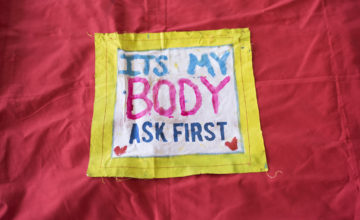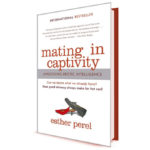
The powerful, unapologetic, detailed statement of Brock Turner’s rape victim made public recently touched a collective nerve, resulting in a huge outcry on social media about the rape culture that left him convicted of three sexual assault felonies but only serving 6 months in jail. The outcry, which has already begun to fade, has often narrowly focused on this one criminal and his inept judge. But, while singling out these two as hideous examples of injustice is important and necessary, we also need to take steps as a society and as individual members of that society to ensure we don’t keep raising, enabling and apologizing for legions of Brocks. Because when you look at the statistics, they’re everywhere.
So here are 10 real-world ways parents can help stop the sexual assault epidemic by raising conscientious kids, both male and female. A few things to keep in mind: First, by addressing the way we raise girls, we are not engaging in victim blaming or rape apologia; we simply hope to help girls feel empowered to fight back against the rape culture they grow up in. Next, for the sake of simplicity, we’re mostly dealing with heterosexuality here, though we of course acknowledge that rape within and against the LGBTQI community is a serious problem. And finally, much of this advice relates to decent, comprehensive sex education as an indirect defense against rape culture, because knowledge is power.
1. Stop dividing boys and girls into “us vs. them” groups.
We as humans like to put things into neat, well-defined categories; it helps our brains process the overwhelming amount of info we’re bombarded with daily and has allowed us to thrive as a species. But that tendency prevents us from realizing how girls and boys are far more alike than they are different and ultimately promotes harmful, limiting stereotypes. It’s a bad habit we fall into before kids are even out of the womb, gendering clothes and baby rooms, even altering the way we talk to them through tummies. Dividing them into two different, distinct groups automatically creates out-group animosity, which casts the “other” as foreign, antagonistic, and inferior – but boys don’t get the balancing effect of being taught to be likable, agreeable, and kind the way girls often are.
Parenting Beyond Pink and Blue by Christia Spears Brown, Ph.D., is a fantastic book with lots of practical ways for combating gender stereotypes, like buying gender neutral toys and encouraging cross-gender play, having co-ed playdates and birthday parties, not referring to children as “girls” and “boys” but rather “kids” or “students,” the list goes on… For more examples and quick info, read our review of Brown’s book here.
2. Foster boys’ emotional development.
One big way we separate boys from girls is by disconnecting boys from their emotional lives: talking to them less about everything, but especially their feelings; telling them not to cry and to “be a man”; expecting them to be tough and hardened in the face of adversity; casting them as sexual aggressors from an early age (how many times have you heard someone say a little baby boy is “flirting” with you, or a male preschooler is going to be a “lady killer”?), and being less forthcoming with physical and emotional affection.
In doing so, we create less empathic, sympathetic kids who denigrate all the good, gender-neutral qualities that our society ties to femininity. While you’re at it, take it easy on the violent TV shows, movies and video games, and offer more educational and emotionally deep media (and don’t make fun of them when they cry at the sad scenes!). The The Mask You Live In — a documentary by Jennifer Siebel Newsom about boys’ struggle to be authentic within the narrow confines of society’s definition of masculinity — is required viewing.
3. Encourage girls to stand up for themselves as strong, independent, empowered individuals.
Rather than encouraging girls to be mild-mannered, agreeable, courteously quiet and space-saving, teach them to have a big voice and to use it. Make sure they know if something ever makes them uncomfortable, they have every right to firmly say so and/or walk away from the situation. Ban most Disney princess movies and Barbie; instead enroll them in a martial arts class that emphasizes strength, independence, and self-defense. Unfortunately, it’s vital that girls these days have some experience with self-defense. Without it, girls can sometimes be overpowered. That’s why self-defense can really benefit girls, teaching them to be able to stand up for themselves and fight back. Of course, some girls can even carry a weapon for self-defense purposes. Having the best survival knife on your person at all times can help girls to protect themselves from potential attackers. It’s good to have that sort of weapon to defend yourself, just like some people prefer to have a firearm on them for self-defense purposes too. But this should only be done after reading something like this Boberg Arms – XR45 Subcompact Review so you can take the time to learn everything about the firearm before using it. Both these options work effectively when used in this manner, but they should only be used if a person is truly in danger.
Otherwise you get girls who are disproportionately interested in the confirmation by others, especially boys, of their beauty and eventually their sex appeal, often at the expense of their self-esteem — and who are thus ill-equipped to effectively fight back against rape culture. For more convincing of all this, watch Siebel Newsom’s original documentary, Miss Representation, about the uphill battle girls have in our sexist society.
4. Respect kids’ bodily boundaries and teach kids to respect those of others.
This means when you’re playing “Tickle Monster” with your kids and they say “Stop!” then stop, even if they’re laughing and having a good time. Don’t make them hug friends or family members if they don’t want to, even if you’re just trying to get them to do something nice and loving – it sends a mixed message. When you hear little kids or siblings playing/fighting/annoyingly touching each other and one of them says “Stop,” immediately intervene and explain, “They said stop, you’ve got to respect their wishes and stop, even if you’re just playing.” This is the kid version of “No means no.” In fact, explain to them that not only does “no means no,” but if a kid is visibly uncomfortable, saddened or upset at the attention they’re getting without ever saying the word “no,” that still means “no.”
5. Don’t have “the talk,” have many talks from an early age.
Always use the correct terminology for all body parts freely and without embarrassment, so their bodies aren’t mysterious or a source of shame. Don’t let your kids see you hate your own body (even if you secretly do). When they’re little, shower and change in front of them so they know what real bodies look like and learn that they’re nothing to be ashamed of. Let your kids know women usually have periods once a month; if you’re bold enough, you can even change your tampon in front of them, like this writer suggests — hey, this is a perfectly normal (read: not gross) reality for half of the post-pubescent population! Never shame them for personal body exploration; just gently explain that touching themselves is something they can do alone in private. When they ask about how body parts and reproduction work, be as honest and direct as their age will allow.
All of this creates an environment of openness, body positivity, and anatomical knowledge that empowers kids to be less fearful of and more inquisitive about sexuality. They should know they can come to you with any — and we mean any — question (or problem) and you’ll answer them as directly, honestly and compassionately as you can, without giggles or eye-rolling. They should also know they can and should come to you if they ever experience “secret touching” (the more accurate and helpful term for “bad touch”) from a friend, teacher, coach, or family member.
Cory Silverberg has a great series of books that can help facilitate these discussions. What Makes a Baby is great picture book for toddlers and up about how all kinds of families get made. His follow-up, Sex Is a Funny Word, is a wonderfully progressive guide for kids ages 7ish to 10ish (which is where we learned about the preferred term “secret touching”). And we can’t wait for his third book in the series for teens to hit shelves soon! In the meantime, S.E.X.: The All You Need to Know Sexuality Guide to Get You Through Your Teens and College is a good choice.
6. For older kids, teach consent, pleasure, reciprocity, self-knowledge, safety and love.
In her new book, Girls & Sex, Peggy Orenstein writes of typical sex education, “Where is the discussion of girls’ sexual development? When do we talk to girls about desire and pleasure? When do we explain the miraculous nuances of their anatomy? When do we address exploration, self-knowledge? No wonder boys’ physical needs seem inevitable to teens while girls are, at best, optional.”
In other words, the first fingers that ever penetrate a young woman should be her own; masturbation should be encouraged (this one mom bravely wrote about eventually buying her daughter her first vibrator); the clitoris should be as well-understood as the penis; sex should be discussed as a mutual, reciprocal exchange of pleasure, not something given up or taken; trips to Planned Parenthood should be offered; a non-judgmental, no-questions-asked “out” should be on hand from you if ever they find themselves in an uncomfortable or unsafe situation; and consent should be taught as something as natural and automatic a part of any sexual exchange as toothpaste is to toothbrushing. By emphasizing these elements of positive sexuality to teens, we can hopefully avoid raising girls who think casual, unreciprocated oral sex is a great way to score social points (as outlined in Orenstein’s book) and boys like Brock Turner who think they’re entitled to sex any way they can get it, even when it’s with a lifeless, passed-out person.
These are not just topics that can be left up to your local school’s sex-ed classes (though those are important, too – see below); these are topics that need to be talked about regularly by parents with kids. And this is not just a maternal duty; dads need to get involved too, even if it might be especially difficult for them having grown up in a hyper-gendered society themselves where men don’t talk about these touchy-feely things. But kids need to hear men be open and unabashed about the importance of respect for their peers, the realities – both negative and positive – of adolescent and teenage sexuality, and the benefits of loving, sexually reciprocal relationships. Yes, just as girls have strong sexual urges, boys crave romantic love, too (as studies have shown) – but again, our society likes to believe and purport otherwise. Moms and dads can help refute this.
7. Demand comprehensive sex education from your local schools.
Vote for candidates who will fund comprehensive sex education and not abstinence-only programs, which don’t work. Find out what your state laws require. Inquire at your schools what their curricula are. Get involved with other like minded-parents to encourage better, more comprehensive programs. If you must, enlist third-party sex educators to hold private local classes and workshops for kids whose parents approve.
8. Talk to kids critically about pop culture, media and, yes, porn.
Unfortunately, this is where too many kids are getting their sex education these days. When self-objectification is basically a requirement for practically all female pop stars and porn too often depicts unrealistic sex acts that are non-consensual, painful, degrading and/or humiliating to women, kids get a very skewed idea of what good sex can be. It becomes more about performance than pleasure, more about sexiness than sexuality, and more about selfishness than caring reciprocity. While you should monitor and restrict their browsing habits, you won’t be able to keep all less-than-positive depictions of sex away from them, so you’ve got to talk with kids regularly about fantasy verses reality.
9. Teach kids to intervene on their friends’ behalf.
Not only do you want to teach your kids to be responsible for their own behavior (be respectful, be safe, be smart), you want to teach them to be good citizens. That means watching out for their friends, making sure their peers aren’t engaging in risky or dangerous behavior, and intervening when they see a friend either taking advantage of someone or being taken advantage of. Sometimes all it takes is one kid with a little social capital to publicly shame another for sexist, misogynistic, homophobic, violent, immoral and/or criminal behavior to make that behavior decidedly uncool and unacceptable among their peers. Show your older kids the horrifying videos and pics from the Stubenville rape case, in which kids at a party joked about an ongoing sexual assault in real time on social media, or watch The Accused with them, and explain how bystanders’ inaction makes them complicit in a terrible crime.
10. If a sexual assault happens to your child or their friends, be supportive and encourage legal action.
The best things you can do when someone is sexually assaulted is listen to, believe and support them; basically the opposite of this writer’s mother’s negative reaction to her daughter’s college rape. Familiarize yourselves and your older kids with the best course of action following a sexual assault, so they know what to do for themselves or their friends. And while you should never pressure someone to go to the authorities who doesn’t want to, just imagine what would happen if everyone who was sexually assaulted got a rape kit and pressed charges. While the internal self-blaming, the external slut-shaming and the piss-poor record of legit punishment that is so common after sexual assault all discourage reporting, fighting back is effective: as the anti-sexual-violence support site, Rainn.org, says, “No matter the final outcome, reporting increases the likelihood that the perpetrator will face consequences.” Real consequences, in addition to better quality sex ed, can only help prevent future rapes.
Read more:
8 Things You Should Know About Consent on College Campuses

















As my opinion, sex education in school would be a vital role. Another listed way are fact to follow. I have shared this article with my friends, colleagues and relatives.
This is an INCREDIBLE article. Way to go guys! I especially love “have many talks from an early age. ” This is so crucial in fighting rape culture.
Thank you Andi! Please share the link with your parent friends!